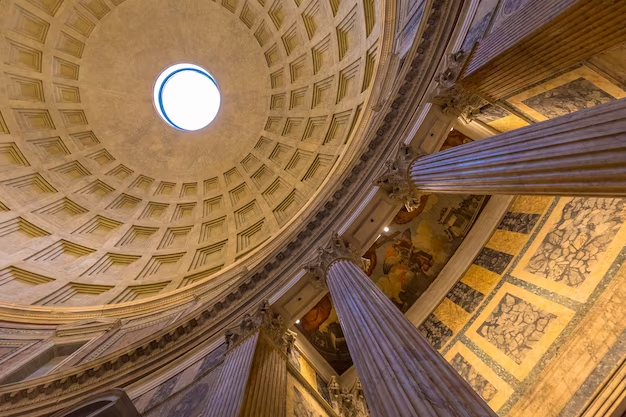
In its essence, environmental storytelling embodies the art of subtlety and suggestion. Instead of conveying a narrative through dialogue or direct explanation, it beckons the audience to immerse themselves in a realm where the story unfolds through the very fabric of the environment. This technique wields immense power, infusing landscapes with emotion, historical significance, and contextual depth, resulting in a more profound and captivating narrative encounter.
At the heart of environmental storytelling lies the concept of “showing” rather than “telling.” It harnesses visual and spatial cues, inspiring audiences to instinctively grasp and explore the narrative. The environment itself assumes the role of an interactive storyteller, igniting curiosity and beckoning the audience to plunge deeper into the unfurling tale.
Different Forms of Environmental Storytelling
Environmental storytelling isn’t restricted to a single form. It can be visual, spatial, temporal, or sensory, and often a combination of these.
- Visual Environmental Storytelling: This technique uses visible elements within the environment to imply a narrative. For instance, a graffiti tag on a wall might hint at a city’s rebellious youth culture, while an abandoned house with a broken swing set could suggest a family tragedy;
- Spatial Environmental Storytelling: The spatial layout of an environment can suggest a story. An empty, echoing cathedral might imply a religious decline, while the frenetic layout of a bustling marketplace could reflect the vibrant chaos of daily life in that locale;
- Temporal Environmental Storytelling: This form of storytelling uses the passage of time to tell a story. It could be as simple as the changing of seasons representing the passage of time, or as nuanced as the decay of a once-majestic building representing a fallen empire;
- Sensory Environmental Storytelling: Storytelling isn’t just visual. Sounds, smells, even the tactile sensation of an environment can tell a story. The distant hum of city traffic can suggest the constant, relentless pace of urban life, while the scent of old books in a library might evoke a sense of history and knowledge.
The Key Ingredients in Crafting Environmental Narratives
Environmental storytelling isn’t as simple as scattering a few relevant props around a location. It’s an intricate process that requires a deep understanding of narrative and a keen eye for detail. Key ingredients include:
- Setting: This is the physical environment where the story takes place. It’s the foundation on which the rest of the environmental narrative is built. The setting sets the mood, influences the behavior of characters, and frames the unfolding narrative;
- Props: These are the objects that populate the environment. Every prop, no matter how insignificant it might seem, has the potential to hint at a larger narrative. A single discarded letter can speak volumes about the person who wrote it and the person it was intended for;
- Aesthetics: The aesthetics of an environment contribute to its overall ‘feel’. They include the color scheme, architectural style, lighting, weather, and even the condition of objects within the environment. Aesthetics can subtly convey the tone of the narrative and provide insights into the world and its inhabitants;
- Spatial Layout: This refers to the arrangement of objects and spaces within the environment. It can guide the audience’s movement and focus, drawing their attention to certain elements and influencing their interpretation of the narrative.
Key Elements of Environmental Storytelling
| Elements | Description |
|---|---|
| Setting | The location where the story unfolds, setting the tone and mood of the narrative. |
| Props | Objects within the environment that hint at the narrative, reveal character traits, and suggest historical or cultural context. |
| Aesthetics | The visual style of the environment, including color scheme, architectural style, lighting, and condition of objects. |
| Spatial Layout | The arrangement of spaces and objects within the environment that guide the audience’s exploration and understanding of the story. |
Interplay of Environmental Storytelling Across Fields

Environmental storytelling is a versatile tool that’s used across various fields, each exploiting its unique potential to enhance their narrative offering.
- Film and Television: Set design in these visual mediums is an integral part of environmental storytelling. The details of a character’s living space, the architecture of a city, or the landscape of a fictional world all contribute to the narrative;
- Video Games: The interactive nature of video games offers immense scope for environmental storytelling. Objects, sounds, and spaces within the game world can hint at backstory, foreshadow events, and convey the game’s mood and themes;
- Architecture and Design: Real-world spaces also tell stories. Architects and designers use environmental storytelling to create buildings and spaces that reflect their purpose, history, or cultural significance. A museum might be designed to guide visitors through a historical narrative, while a memorial might use symbolic elements to evoke specific emotions;
- Theater: In theater, the set itself becomes a character. Every prop, the state of the set, the lighting, and even the positioning of actors tell a story. Environmental storytelling helps deepen the audience’s understanding of the plot and characters.
The Impact and Significance of Environmental Storytelling

Environmental storytelling is a potent narrative device, drawing in the audience through an interactive and immersive experience. Instead of being passive receivers of the narrative, audiences become active participants, piecing together the story from the environmental cues.
Environmental storytelling also allows for personal interpretation. Each audience member might notice different details and draw their own conclusions, leading to a more personalized narrative experience. This can make the story more memorable, as audiences are more likely to remember the narratives they’ve discovered and pieced together themselves.
Impact of Environmental Storytelling
| Impact | Description |
|---|---|
| Engagement | Environmental storytelling turns audiences into active participants, enhancing engagement. |
| Personal Interpretation | It allows for personal interpretation, leading to a more personalized narrative experience. |
| Memorability | Audiences are more likely to remember the narratives they’ve discovered and pieced together themselves. |
Moreover, environmental storytelling adds depth and realism to a narrative. It can convey complex histories, cultural contexts, and thematic undertones without resorting to lengthy exposition. This can make the narrative more impactful, as it mirrors the complexity and subtlety of real-world narratives.
Conclusion
Environmental storytelling is about understanding the potent narrative power of the environment. It’s about learning to see and craft stories in the world around us, and inviting others to do the same. It’s a tool that can breathe life into narratives, making them more engaging, immersive, and memorable. With the right understanding and application, environmental storytelling can elevate any narrative to new heights.
FAQ
Traditional storytelling relies primarily on explicit exposition, dialogue, and action. Environmental storytelling, on the other hand, uses the environment as a medium to convey the narrative. It’s a more subtle and immersive approach, inviting the audience to discover and interpret the story themselves.
While environmental storytelling can be powerful on its own, it’s often most effective when paired with traditional storytelling methods. It can add depth and complexity to a narrative, but it also relies on the audience’s willingness to explore and interpret the environment. Traditional storytelling methods can ensure that key narrative points are conveyed clearly.
Start by thinking about the story you want to tell, and how the environment can reflect that story. Consider every aspect of the environment, from the overarching setting to the smallest prop. Each element should serve the narrative in some way, whether by revealing character traits, suggesting historical context, or foreshadowing future events.